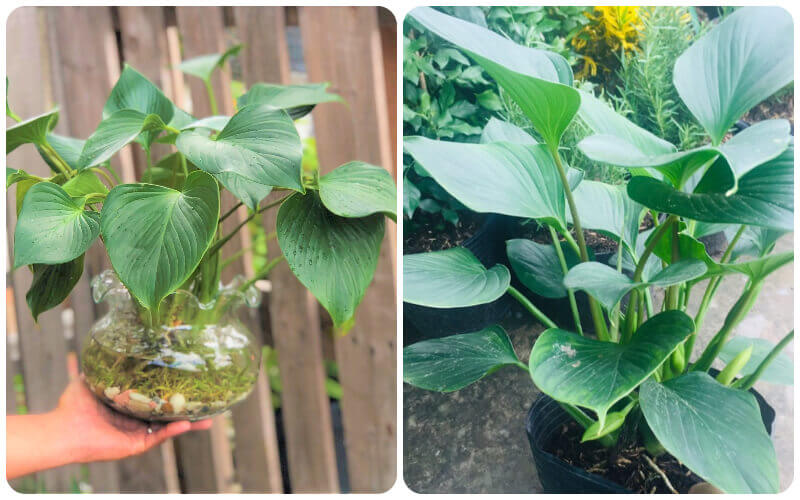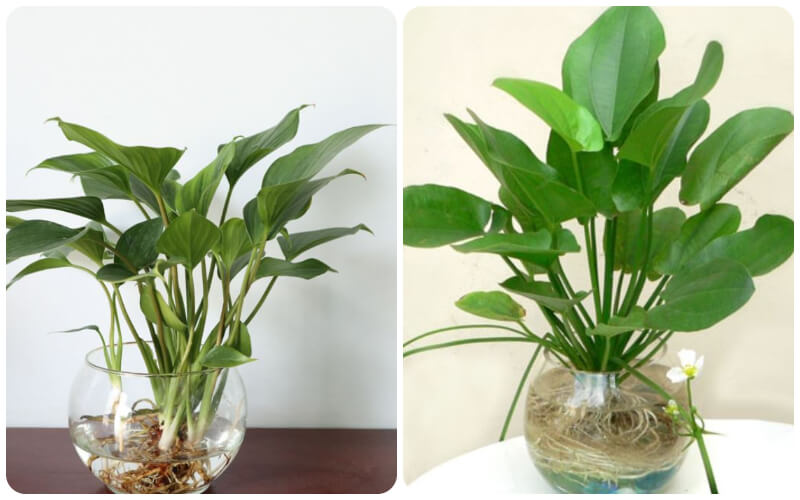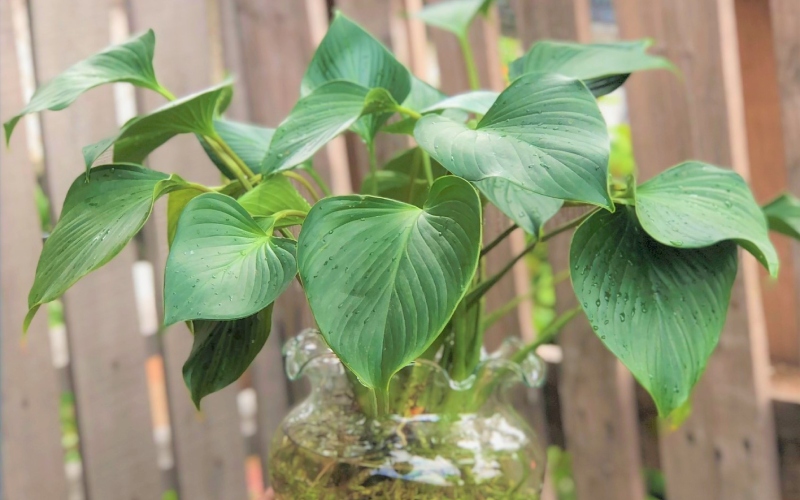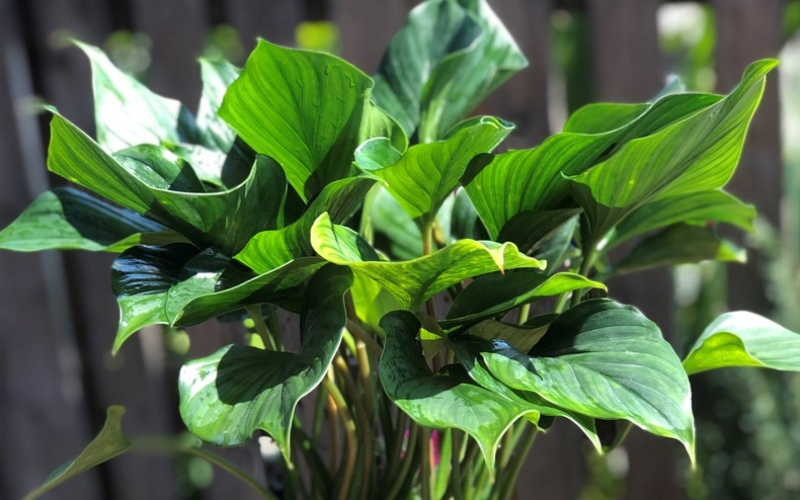The Aglaonema modestum, commonly known as the Peace Lily, is a popular houseplant and gift, chosen for its beauty and the peaceful and lucky sentiments it conveys. Let’s explore the origins, meanings, and care instructions for this special plant.
1 What is the Peace Lily?
Origin and Meaning of the Peace Lily
The Peace Lily, scientifically known as Aglaonema modestum Schott and Aglaonema modestum Engl., is a herbaceous species with bushy growth. It belongs to the Araceae family and is native to northern Bangladesh, later introduced to other countries, including Vietnam.
 Origin and Meaning of the Peace Lily
Origin and Meaning of the Peace Lily
The name “Peace Lily” reflects its calming and purifying essence, symbolizing serenity, tranquility, and peace of mind, dispelling life’s troubles and inviting happiness, good fortune, and luck.
Feng Shui Significance of the Peace Lily
The Peace Lily is an aquatic plant with lush green foliage and white roots, making it particularly suitable for those with Wood and Water elements in Feng Shui. According to the five elements theory, Water nourishes Wood, so those with a Wood element will benefit greatly from having this plant in their home or office.
Additionally, the white roots represent the Metal element, which generates Water. Therefore, those with a Water element are also compatible with the Peace Lily, as the Water element will compensate for any depletion by the Wood element.
As the Peace Lily resonates strongly with the Wood and Water elements, it is especially auspicious for individuals born in the following years:
- Wood element: Canh Dần (1950), Kỷ Hợi (1959), Nhâm Tý (1972), Quý Sửu (1973), Canh Thân (1980),…
- Water element: Giáp Thân (1944), Quý Tỵ (1953), Đinh Mùi (1967), Nhâm Tuất (1982), Quý Hợi (1983), Đinh Sửu (1997),…
For these individuals, the Peace Lily brings good luck, smooth sailing, and abundant wealth.
 Feng Shui Significance of the Peace Lily
Feng Shui Significance of the Peace Lily
Characteristics and Classification of the Peace Lily
The Peace Lily has oval or spear-shaped leaves, with a glossy surface and a deep green color, measuring approximately 20 cm in length and width. Its leaf canopy is round and spreads widely, with a strong, white root system.
The Peace Lily produces flowers in the form of long tassels, about 20-30 cm in length. The buds are green, and the flowers have white petals and yellow stamens, creating a pure and delicate appearance when in bloom.
 Characteristics and Classification of the Peace Lily
Characteristics and Classification of the Peace Lily
2 Benefits of the Peace Lily
The Peace Lily is a popular choice for indoor decoration and gifting due to its easy care, vibrant green color, and ability to alleviate stress, bringing a sense of hope and tranquility to any space.
Additionally, it is known for its air-purifying qualities, absorbing radiation and ultraviolet rays from electronic devices. It makes an excellent gift for loved ones, colleagues, and friends, conveying wishes for peace and good fortune, or as a grand opening gift, symbolizing prosperity and harmony.
 Benefits of the Peace Lily
Benefits of the Peace Lily
3 How to Grow and Care for the Peace Lily
Growing the Peace Lily at Home
The Peace Lily is easy to grow, and the most common methods include potting young plants or separating offshoots, as well as hydroponics.
 Growing the Peace Lily in Soil or Hydroponically
Growing the Peace Lily in Soil or Hydroponically
Hydroponics: To grow the Peace Lily hydroponically, prepare a glass container, place the plant inside, and add some gravel to secure the roots. Then, fill the container with water and add a few drops of hydroponic nutrients.
Soil planting: For soil planting, choose a well-draining soil and pot the plant, adding soil to stabilize it. Water the plant to maintain moisture and increase its chances of survival.
When propagating through offshoot separation, select healthy, pest-free offshoots, cut them, and plant them in a pot with loose, airy soil. Remember to water 2-3 times per cutting during this stage to encourage growth.
Caring for the Peace Lily
 The Peace Lily prefers a humid environment, so water it 2-3 times a day
The Peace Lily prefers a humid environment, so water it 2-3 times a day
- Fertilizer: For soil planting, use organic compost, worm castings, inorganic fertilizer, NPK – 30 – 10 – 10, and foliar fertilizers. For hydroponics, simply add a specialized nutrient solution.
- Temperature: If growing hydroponically, expose the plant to sunlight once a week for 2 hours between 7 and 9 am, when the sun is gentle and won’t scorch the leaves.
- Watering: The Peace Lily thrives in humidity, so water it 2-3 times a day. For hydroponics, change the water once a week, trimming away any rotten roots and gently rinsing the roots to remove dirt and encourage new growth.
- Soil: The soil should be loose, airy, and rich in nutrients to support the plant’s growth, with good drainage.
Notes on Growing and Caring for the Peace Lily
 Notes on Growing and Caring for the Peace Lily
Notes on Growing and Caring for the Peace Lily
- Change the water once a week for hydroponics, trimming away rotten roots and cleaning the roots.
- Wipe the leaves regularly to maintain their color if kept indoors. If leaves turn yellow or wither, cut them off and expose the plant to sunlight once a week for photosynthesis.
- If the plant becomes diseased or weak, transfer it to a soil-based pot.
- Avoid overwatering to prevent leaf rot and root rot.
- Do not add tea or coffee grounds to the pot, and keep the root area dry and well-ventilated.
4 Five Beautiful Images of the Peace Lily
 Peace Lily leaves
Peace Lily leaves
 Peace Lily potted in soil
Peace Lily potted in soil
 Peace Lily grown hydroponically
Peace Lily grown hydroponically
 Peace Lily’s unique beauty
Peace Lily’s unique beauty
 Peace Lily’s serene presence
Peace Lily’s serene presence
In conclusion, the Peace Lily is a plant of beauty and symbolism, offering a sense of tranquility and good fortune to its owners. We hope this article has provided valuable insights into its origins, meanings, and care instructions.
2023 Lunar New Year Gift Ideas for Older Family and Friends
As 2021 approaches, families worldwide are gathering to celebrate the special bond between grandparents and their grandchildren. To show their love and admiration, these thoughtfully chosen gifts will bring a smile to the face of the elderly. Here, we have compiled a list of the 13 most meaningful Tet presents that can bring joy to our beloved grandparents.



































